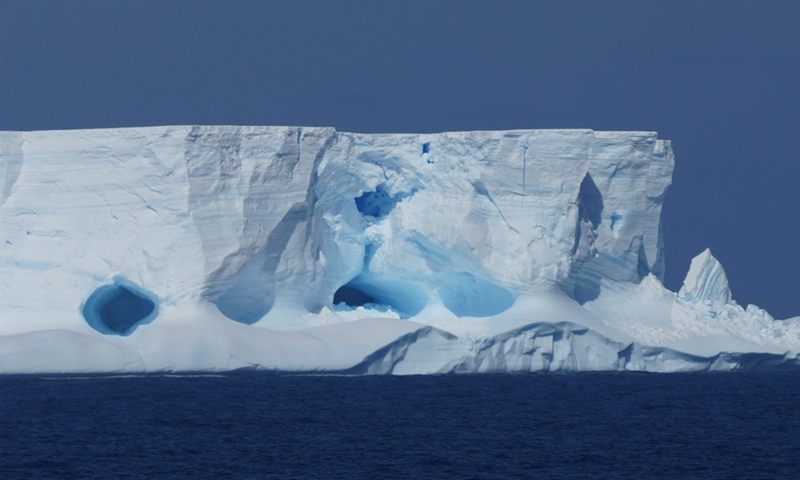Rising Sea Levels May Put Hundreds of Millions of People Underwater, Climate Change Study Finds

Photo taken on Feb. 1, 2020 shows a glacier in the Weddell Sea off the Antarctic continent.(Photo: Xinhua)
A study published in the journal Nature Communications suggests that 630 million people currently live on land below the projected annual flood levels by 2100. The study also indicates that as early as 2050, 340 million will be on land below the projected flood levels.The staggering projections for the number of people set to be displaced in the 21st century are if current CO2 levels are not cut and if CO2 emissions continue to rise at the rate they have recently. The model also accounts for scenarios where CO2 emissions are cut dramatically.
However, those models still indicate that by 2100, 190 million people live on land that will be under projected flood levels. Even with an aggressive reduction in CO2 levels, sea levels will continue to rise because the world’s oceans have already captured an incredible amount of heat.
The study suggests that the Asia-Pacific region will be the most dramatically impacted. However, nearly all coastal areas will be affected, with Florida likely facing the most severe land loss of any US state.
Another concern is the unknown factor of ice sheet instability. Marine ice sheet instability is where ice melt from warming causing a cascading effect that dramatically increases the rate of ice sheet loss. While models can project what would occur if it were to happen, they are less reliable than other projections, and even more difficult to gauge an approximation of when it could occur.
Sea level rise is just one of the many climate change-related problems that humanity faces in the 21st century. Wildfires and droughts have worsened, air quality can be negatively impacted by severe heat, hurricanes are producing more rainfall, and some regions could simply become inhabitable due to heat.
As climate change continues to worsen, human populations, especially in poorer nations, could be displaced and the economies of developed nations will either be weakened or massive infrastructure spending will be needed to prevent land loss.
Scientists believe that keeping the average global temperature from rising above 1.5 Celsius of pre-industrial levels by 2050 will help prevent worst-case scenarios. The current mark is at 1.1 Celsius, and with worldwide CO2 emissions projected to rise, scientists believe urgent and dramatic changes need to be taken.
